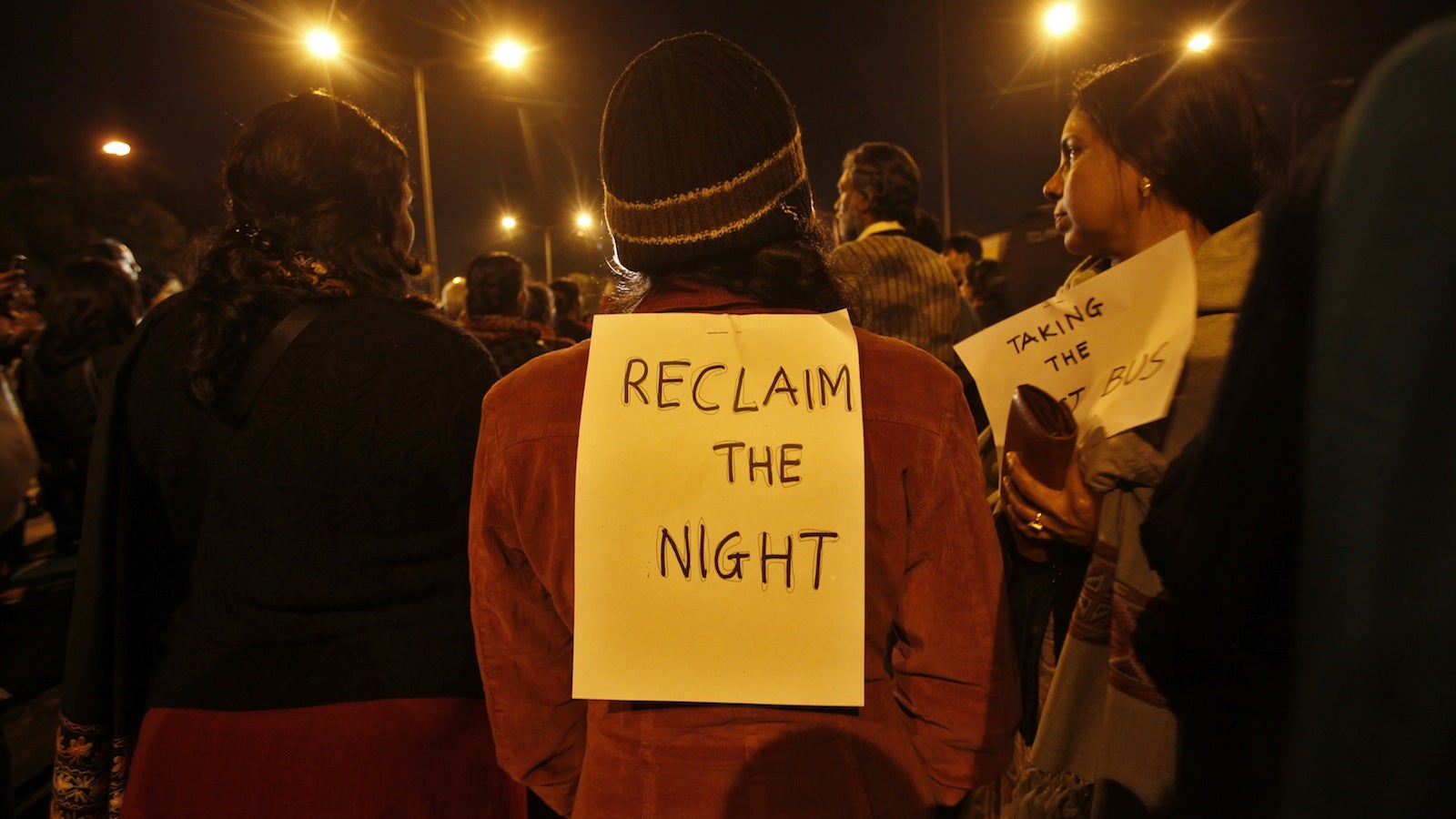People in Delhi don’t feel safe staying out late—and it’s hard to blame them
“What is the latest time in the day that you feel safe returning home alone?” This seemingly simple question throws light on how safe do people feel in the city they are living in.


“What is the latest time in the day that you feel safe returning home alone?” This seemingly simple question throws light on how safe do people feel in the city they are living in.
Mumbai is perceived to be the safest among the four metropolitan cities where people don’t mind going home alone even after nine at night, while residents of India’s capital aren’t comfortable traveling alone after 8 pm, according to a new survey.
That people in Delhi don’t prefer traveling alone at night isn’t surprising. In 2012, a 23-year-old woman was raped on a moving bus. She boarded the bus around 9:00 pm, accompanied by a male friend. And only last year, in December 2014, a woman in Delhi was allegedly raped by an Uber driver.
Delhi has the highest crime rate among the four metro cities in India. Crime rate is defined as the number of crimes per 100,000 of population.

The survey was done by the Lok Foundation in collaboration with the Centre for the Advanced Study of India at the University of Pennsylvania and Carnegie Endowment of International Peace. Nearly 70, 000 people were interviewed across across 25 states and union territories between January and May 2014. The respondents were given hourly choices starting with 5:00 pm and concluding with “midnight or after.”
About 36% of the respondents said that they didn’t feel safe returning home alone after 7:00 pm, while 4.5% were too scared to go back home alone at midnight. People in Gujarat, according to the study, are most comfortable traveling alone—even after 9:30 pm. Meanwhile, those living in Chhattisgarh and Punjab typically don’t prefer to travel alone after half-past six in the evening.
The findings also suggest that people consider urban areas to be safer than rural—and the time till which people feel safe to stay out alone reduces with the size of the city.
Milan Vaishnav and Neelanjan Sircar, the authors of the report, wrote:
In small towns, the average response was just 7:51 p.m., more than an hour less than those living in megacities and similar to rural India. This implies that perceptions of public safety are not driven by urbanisation per se; rather, they are likely driven by the infrastructure and amenities associated with the largest cities in India.
And urbanisation cannot alleviate concerns about public safety, the authors note:
Our data also show that urbanisation is not a panacea for concerns about public safety. Rather, cities must invest in the “right kind” of urbanisation, with the sort of infrastructure seen in the largest cities. These cities have better amenities (such as street lights) and often have buses or even a metro that runs reliably until late at night.